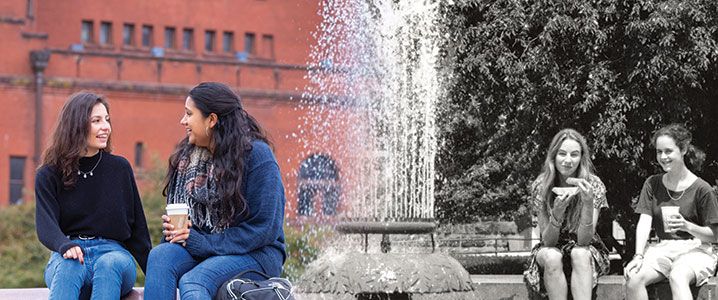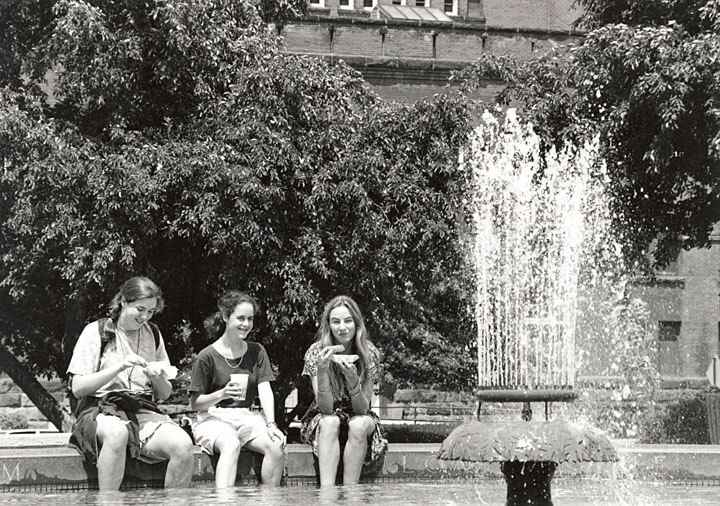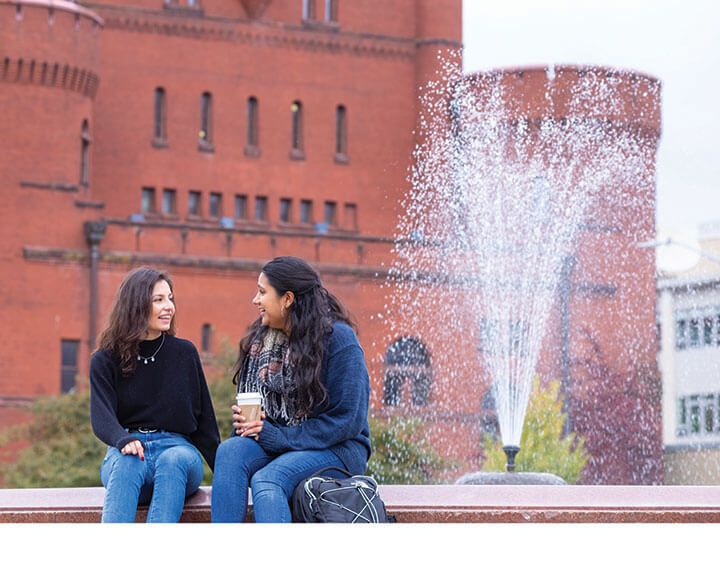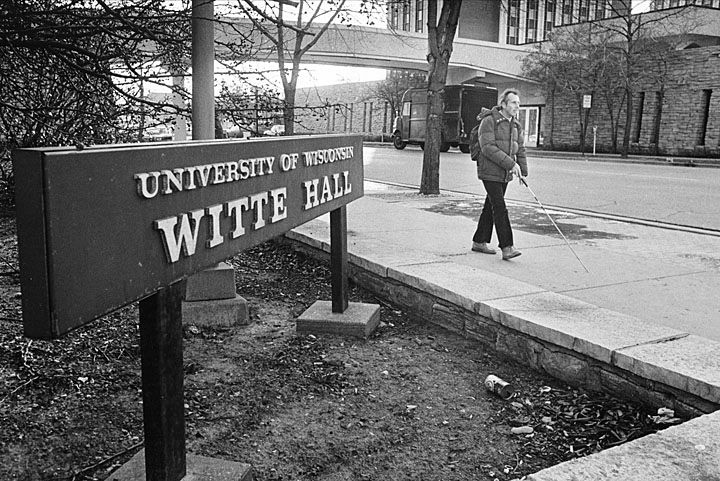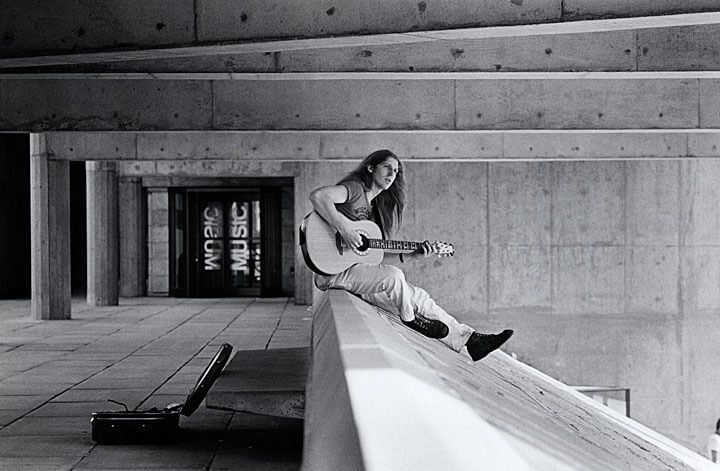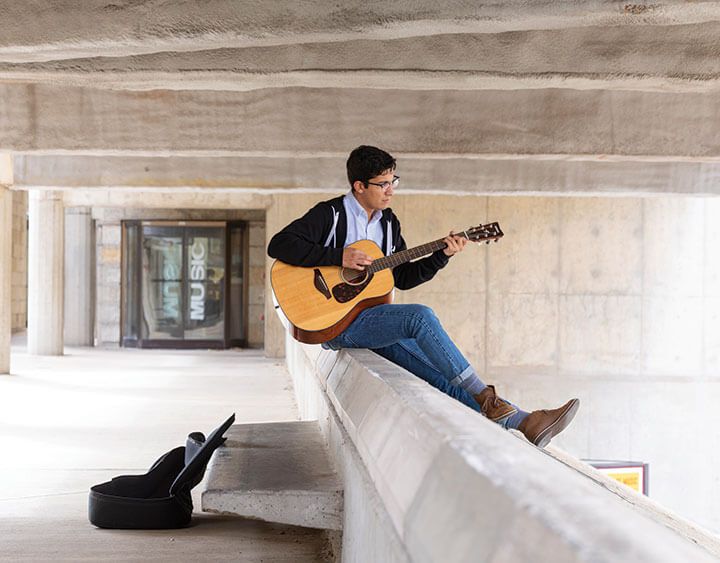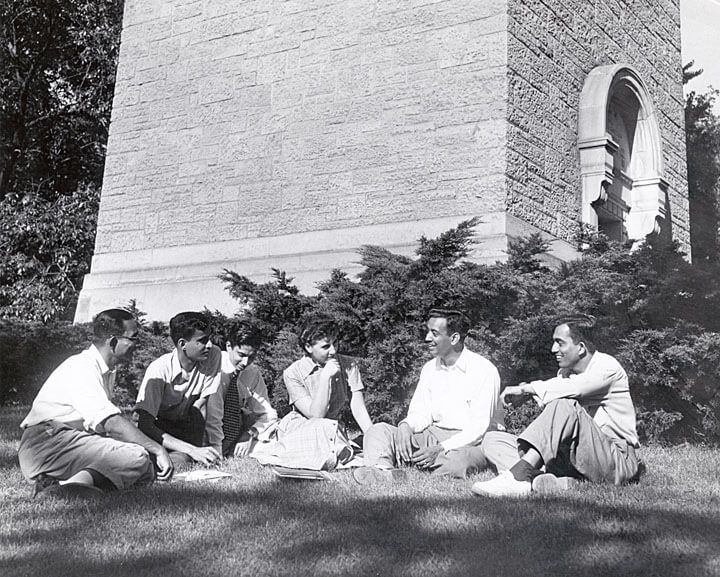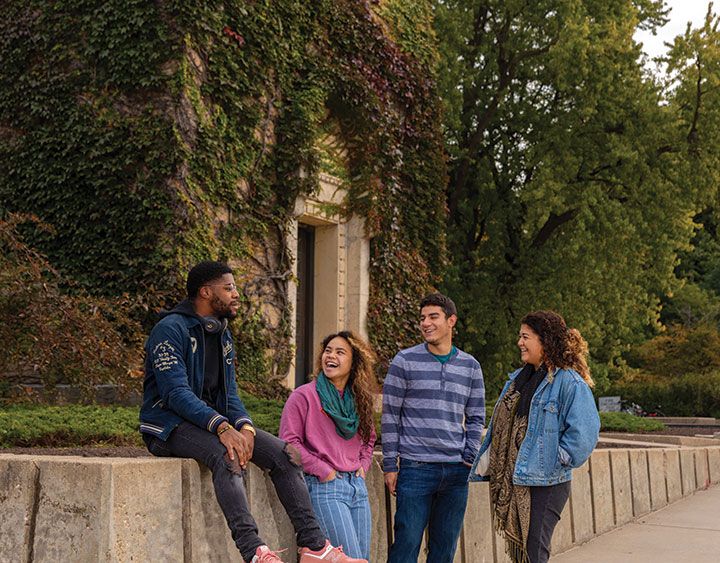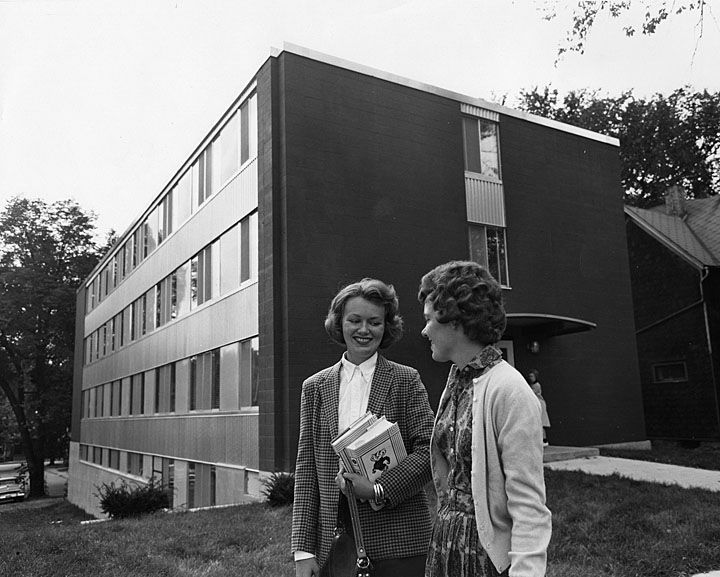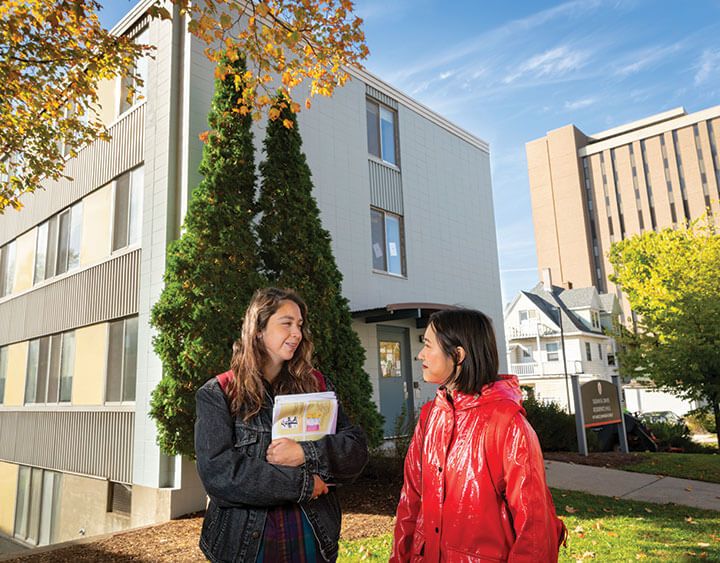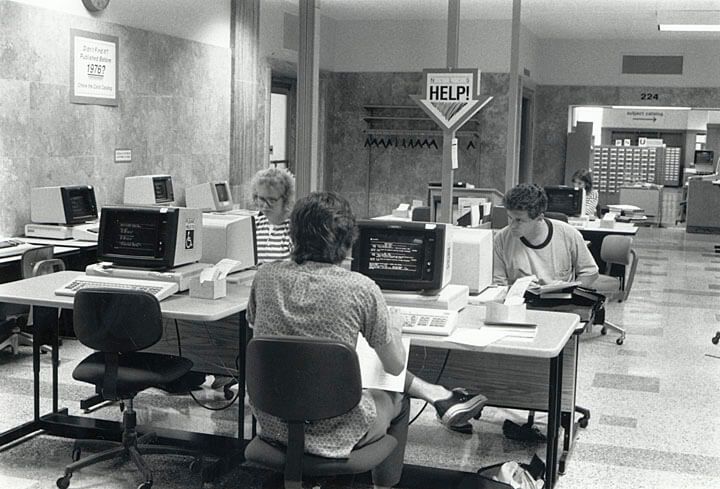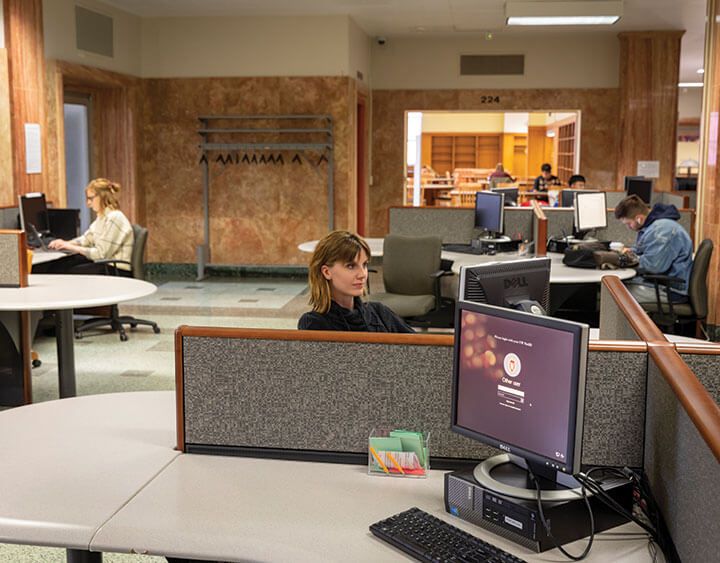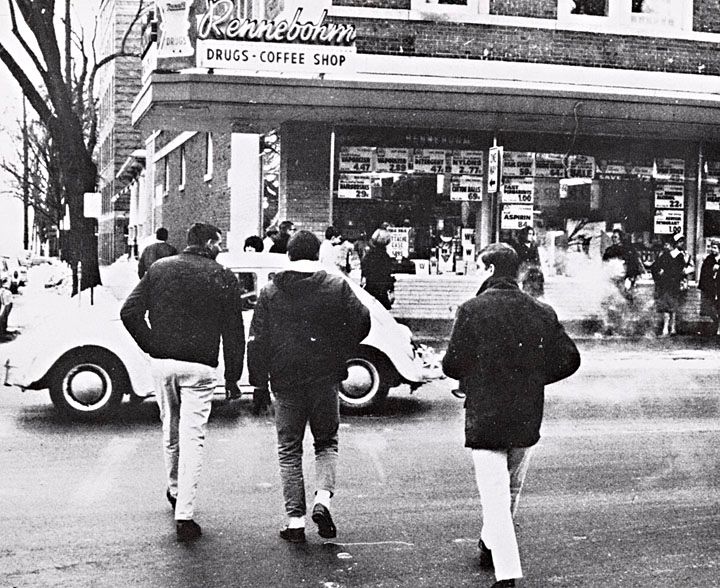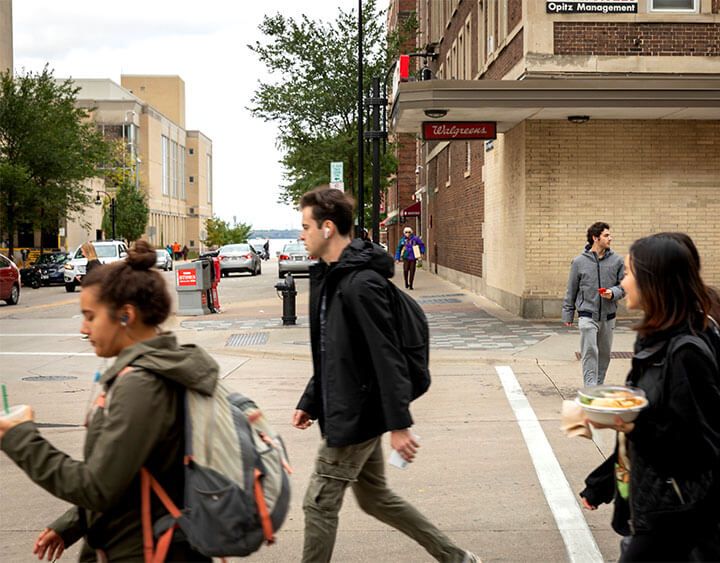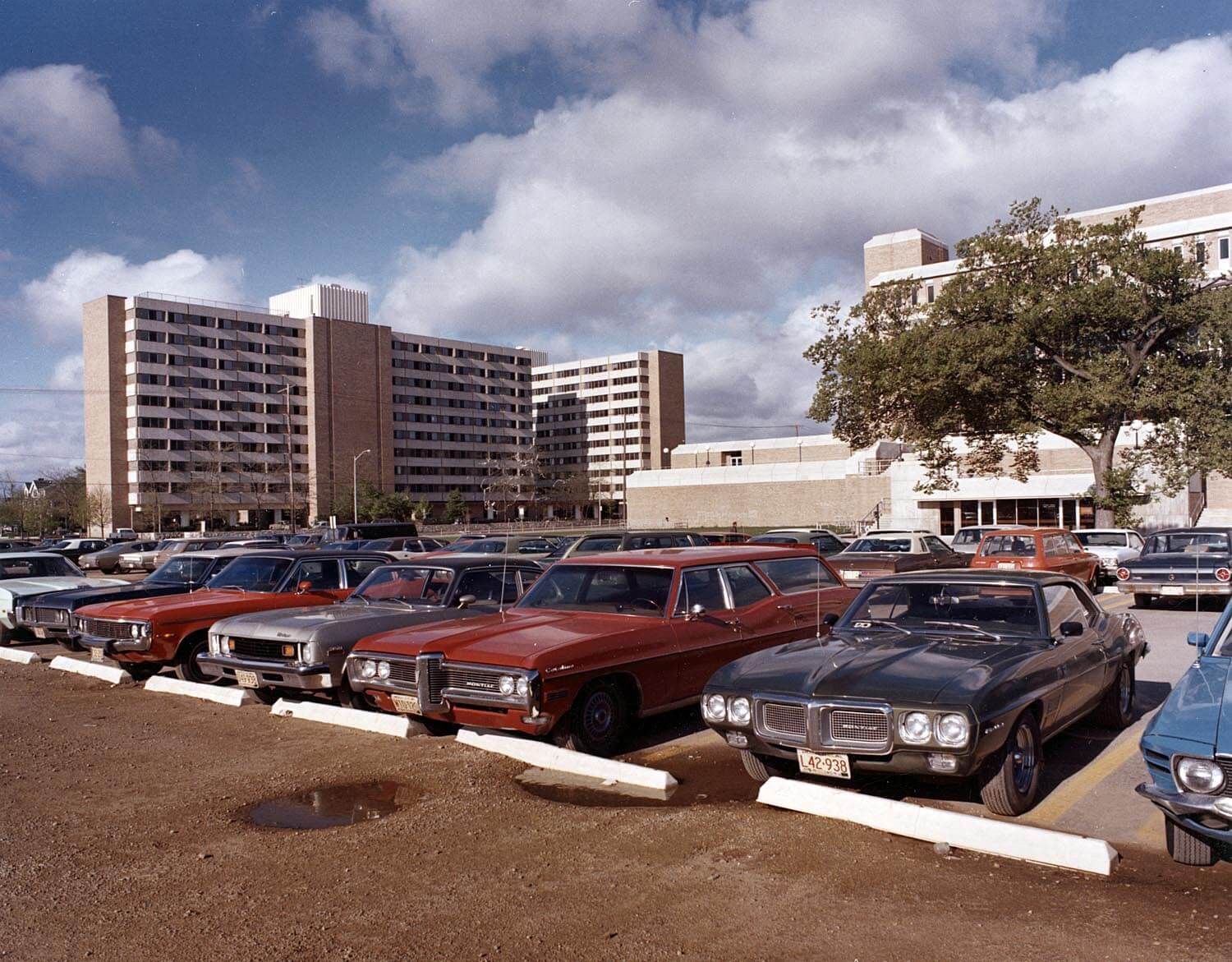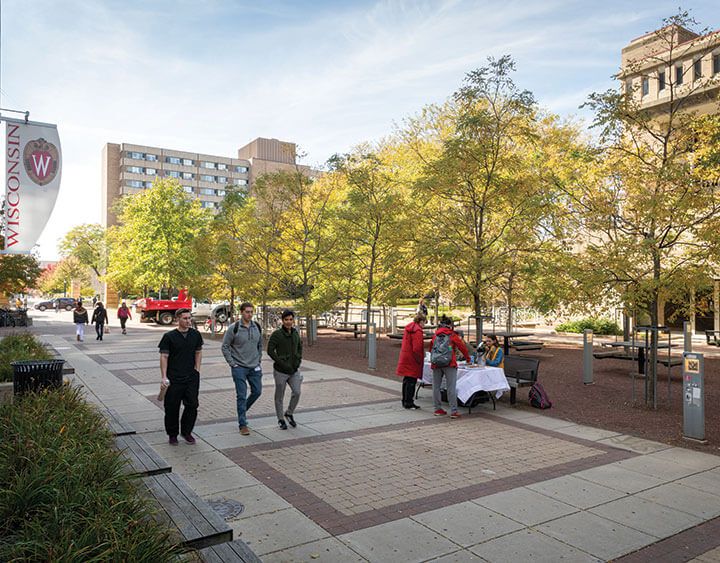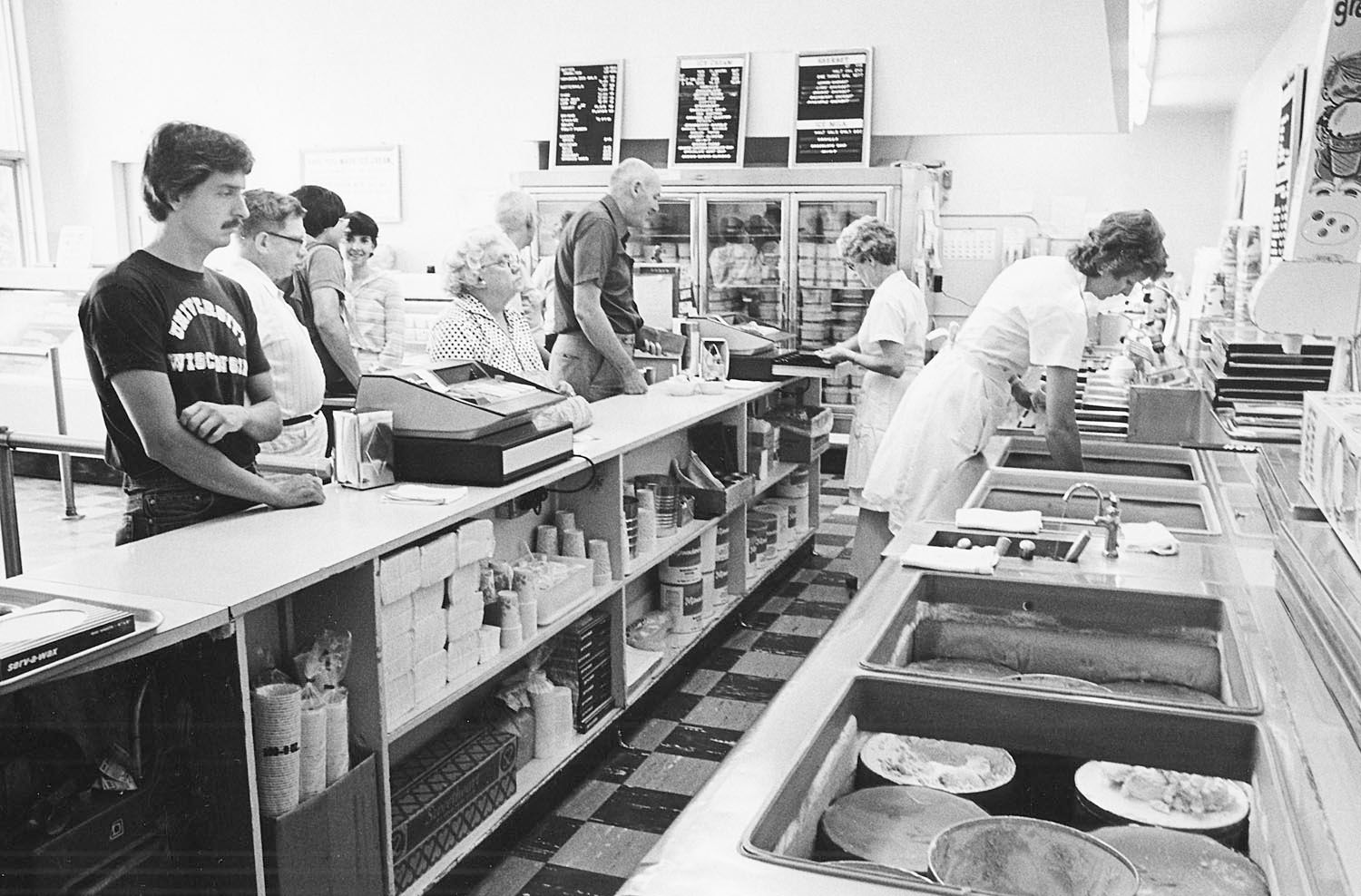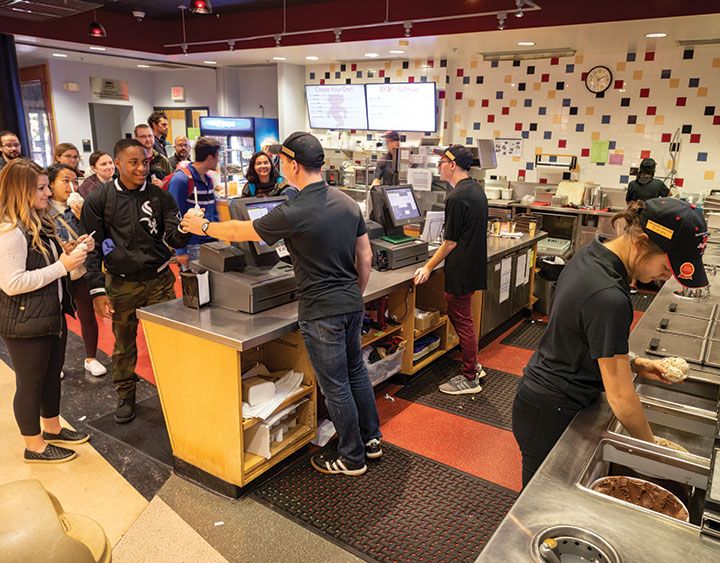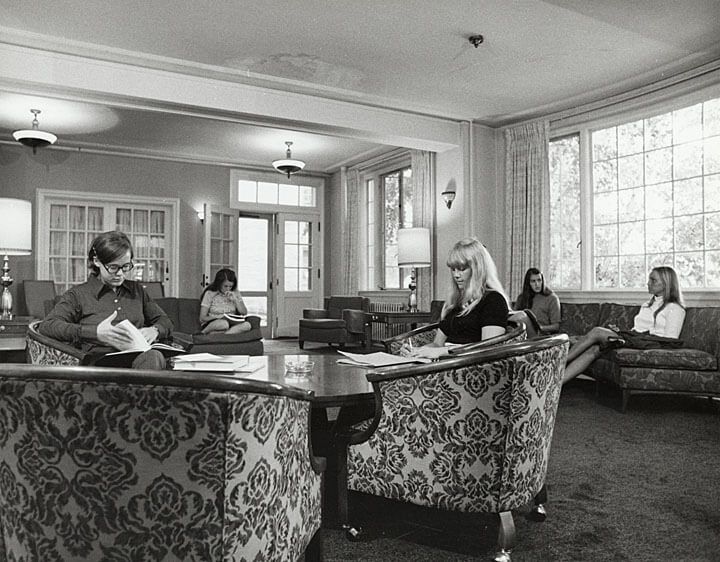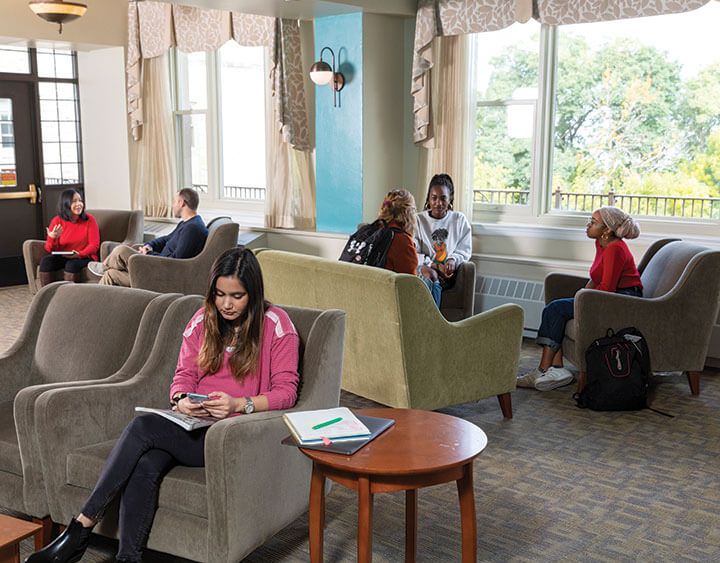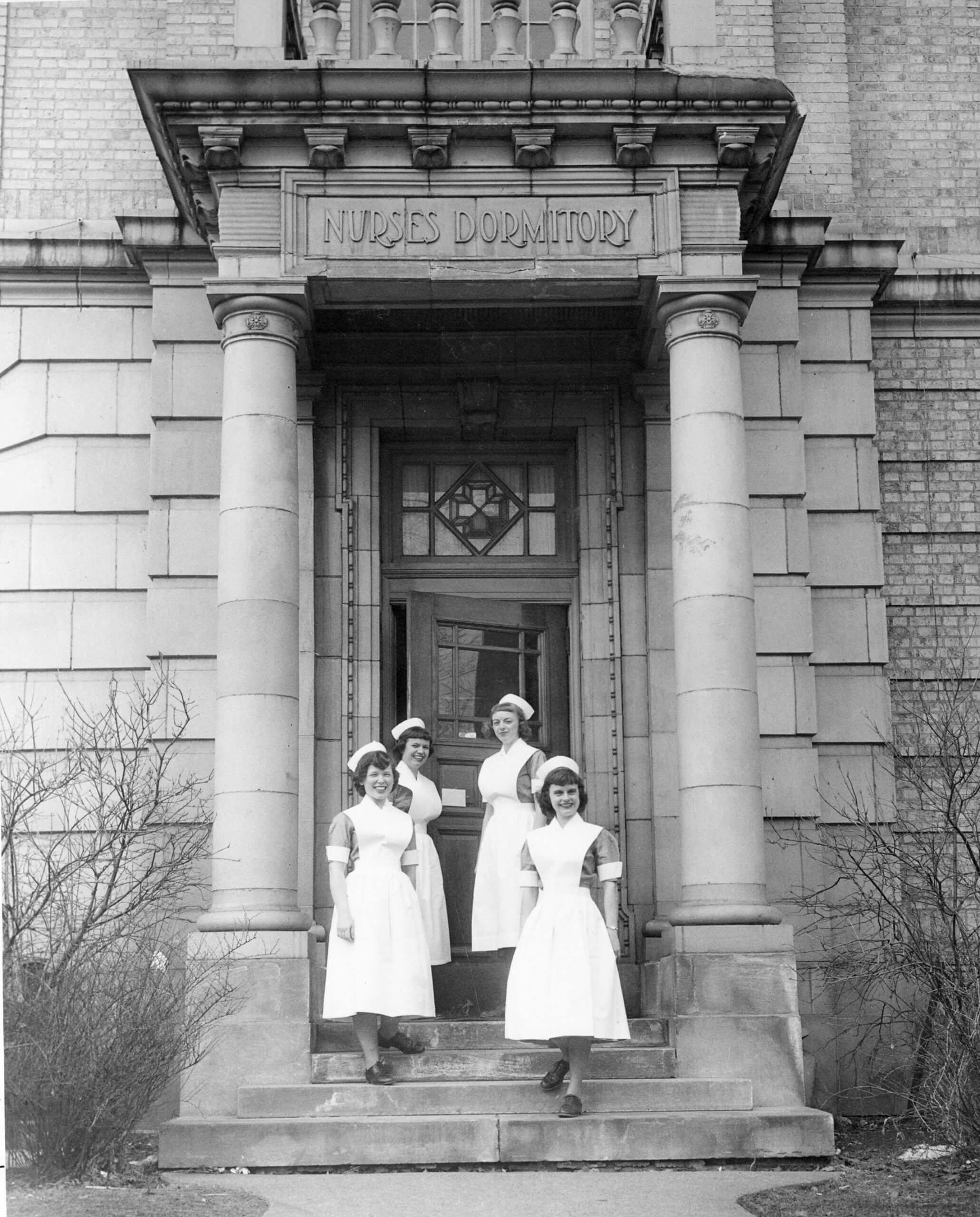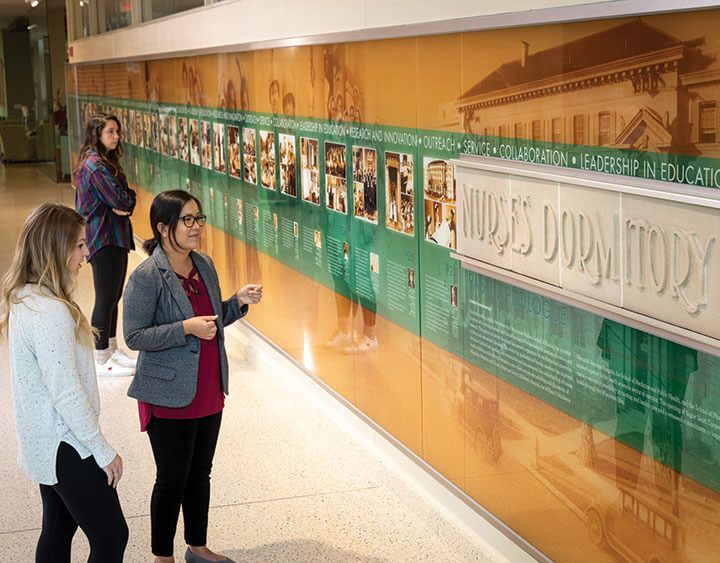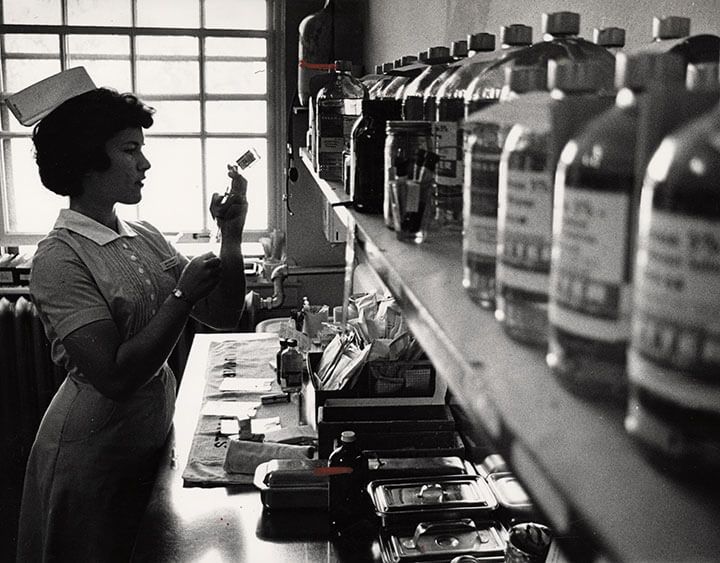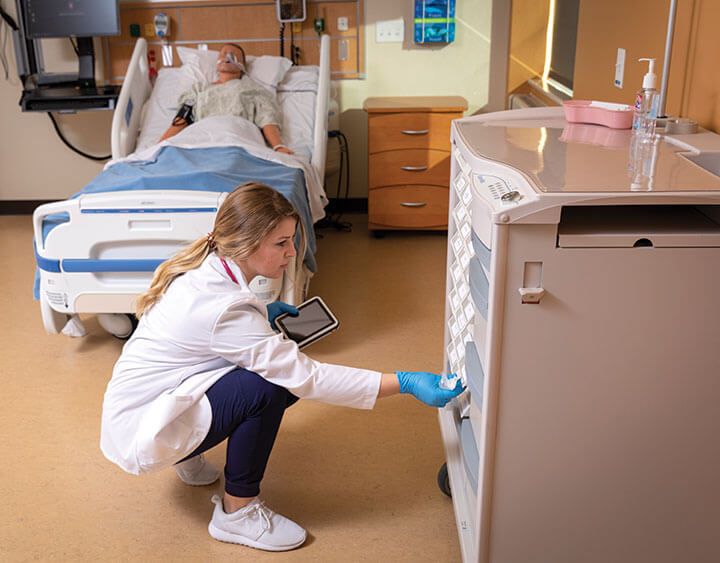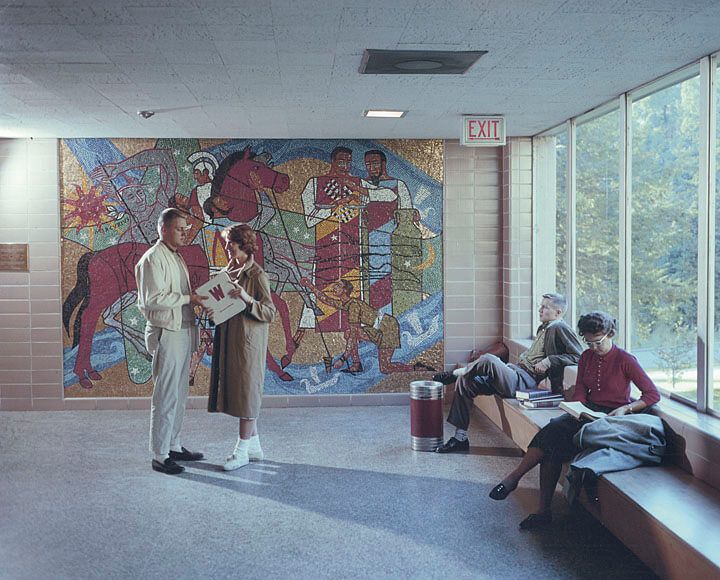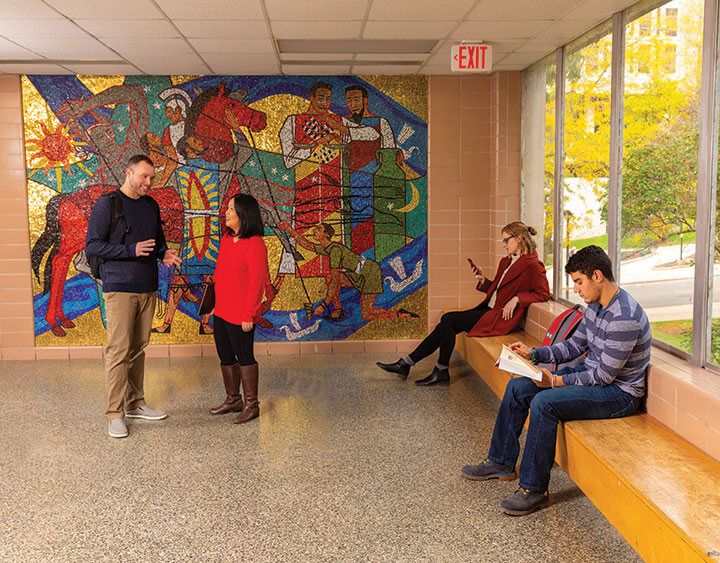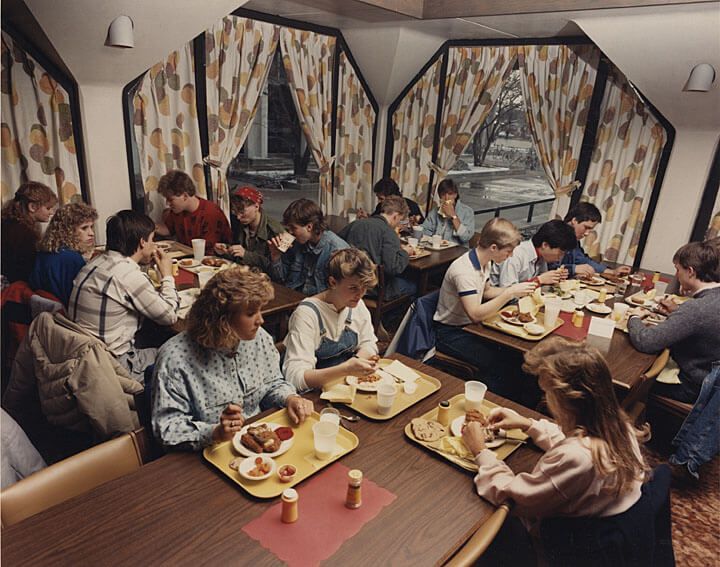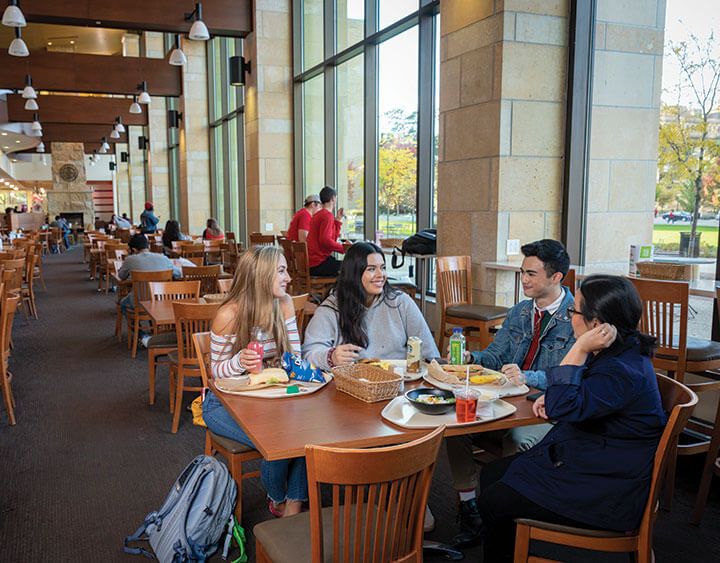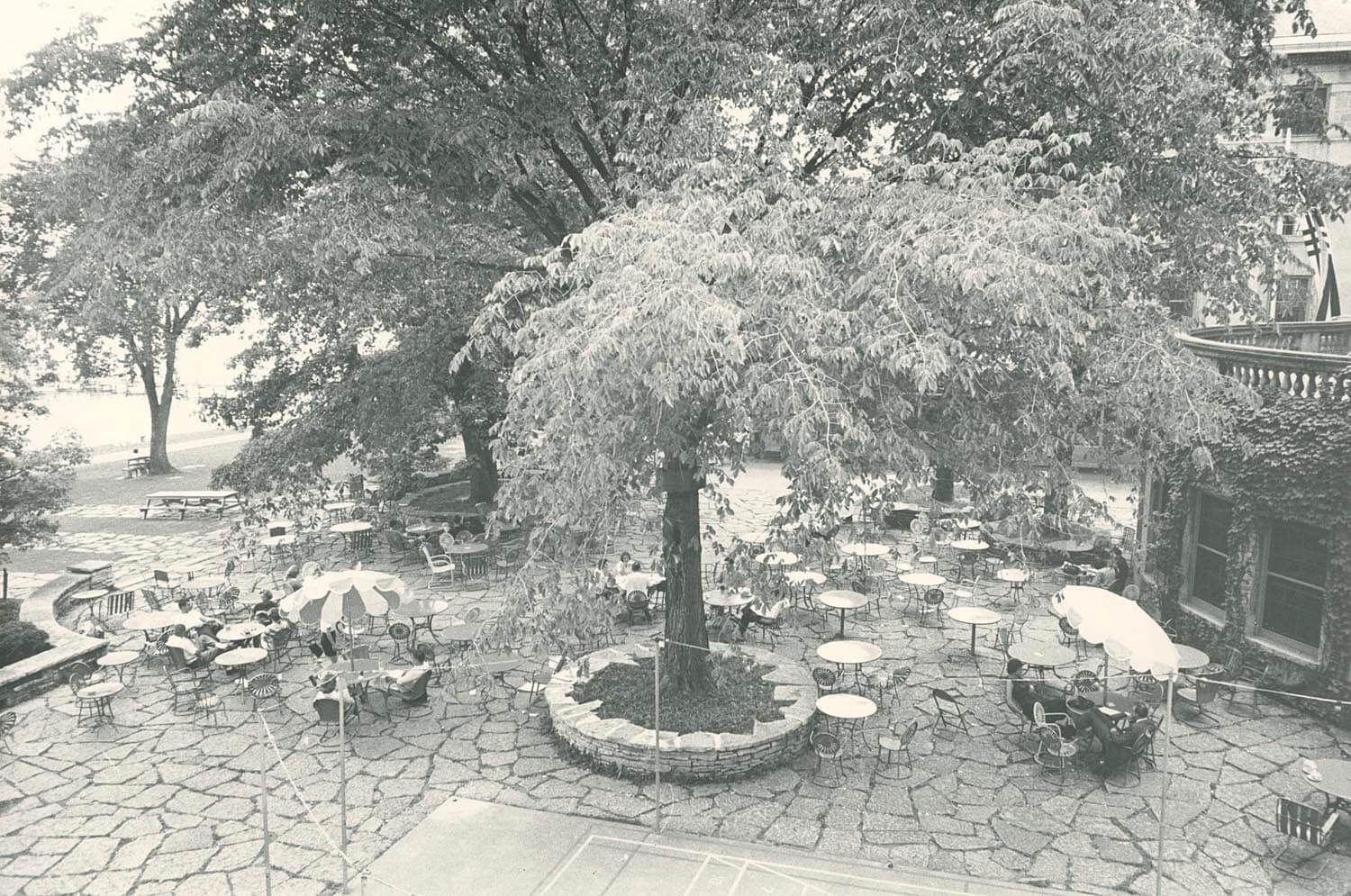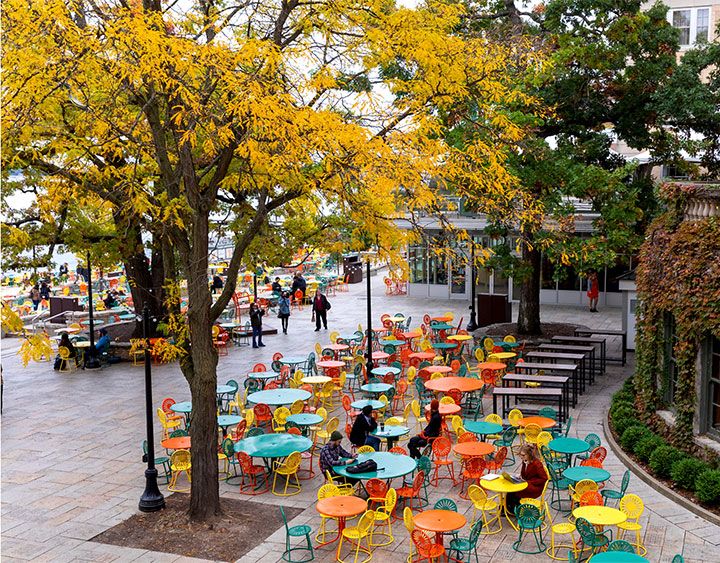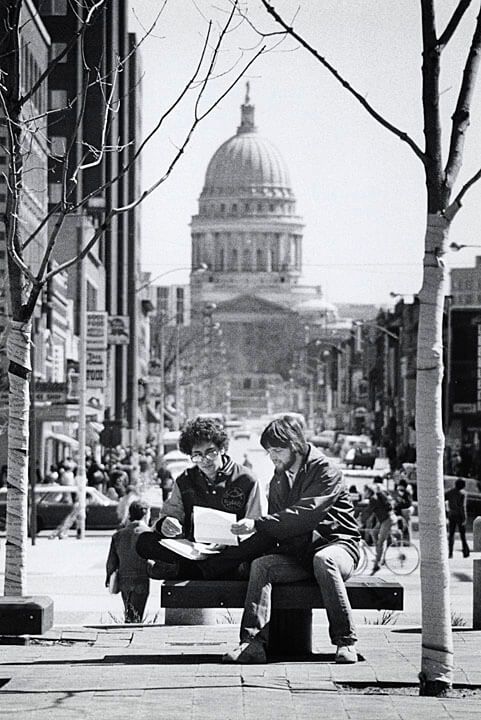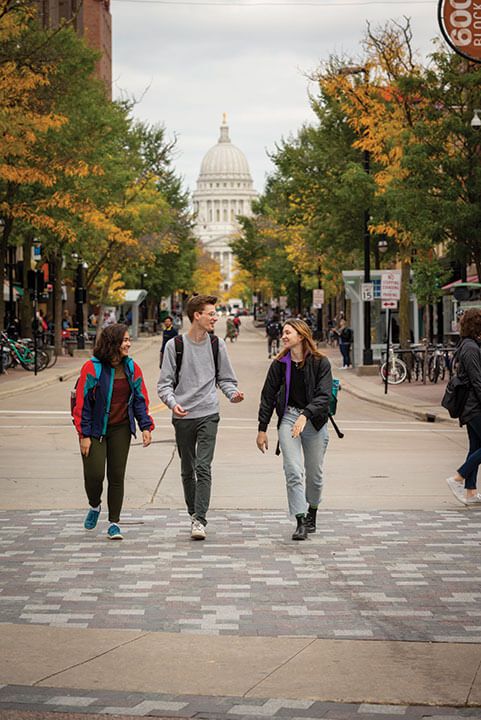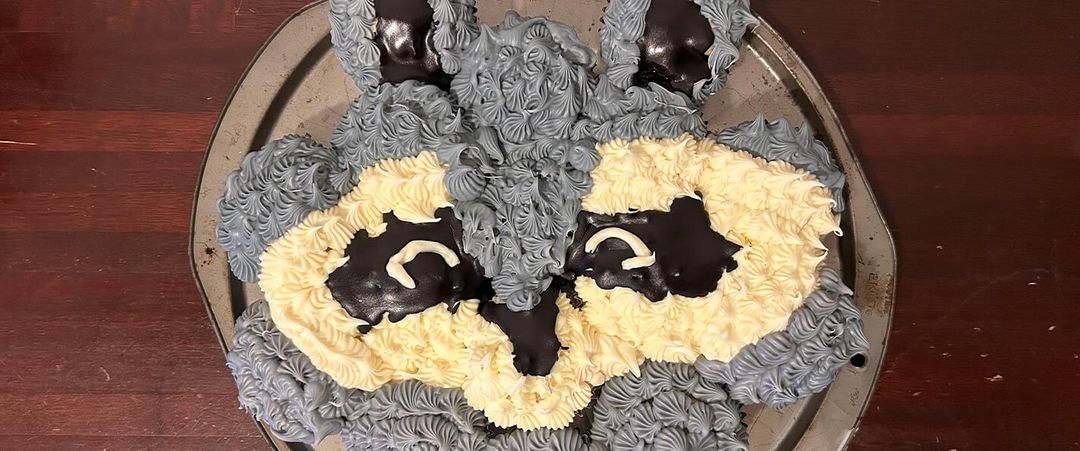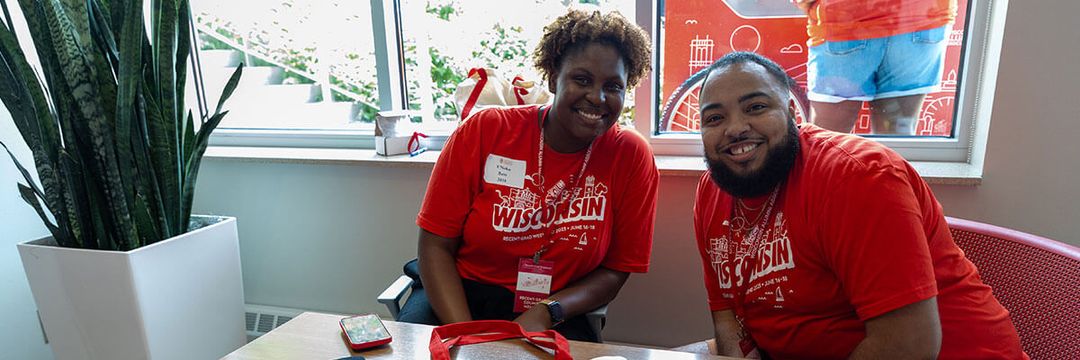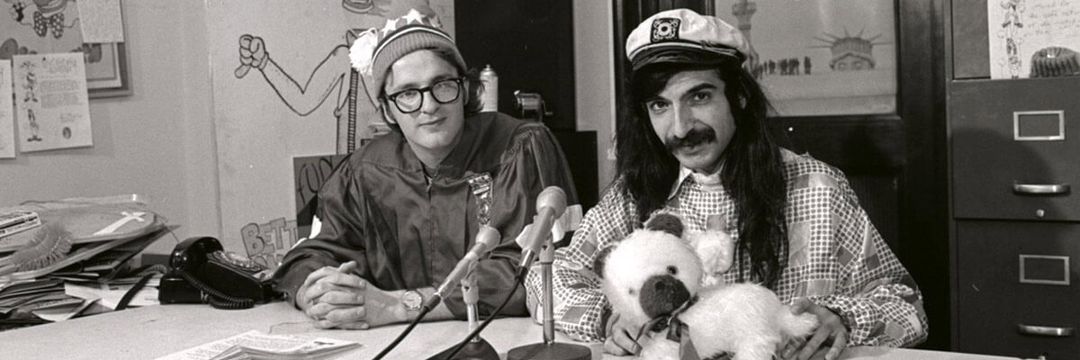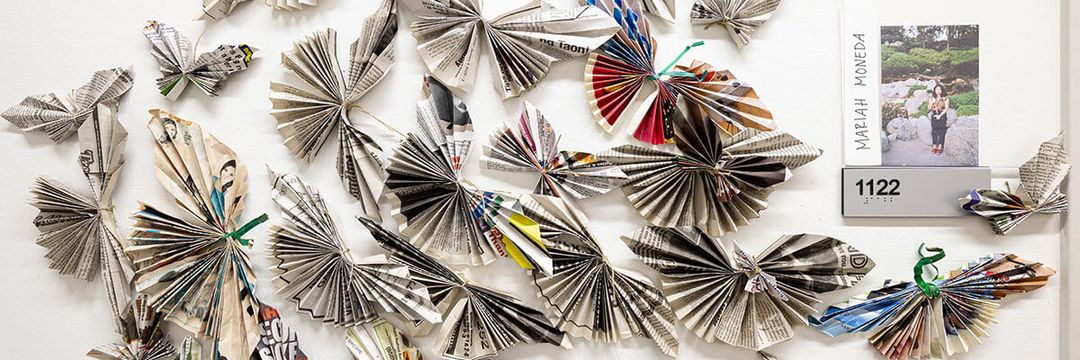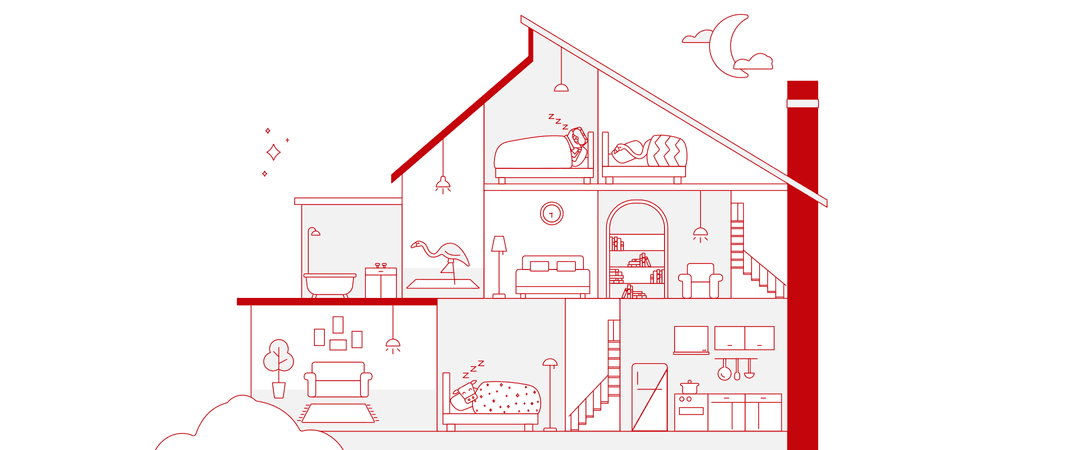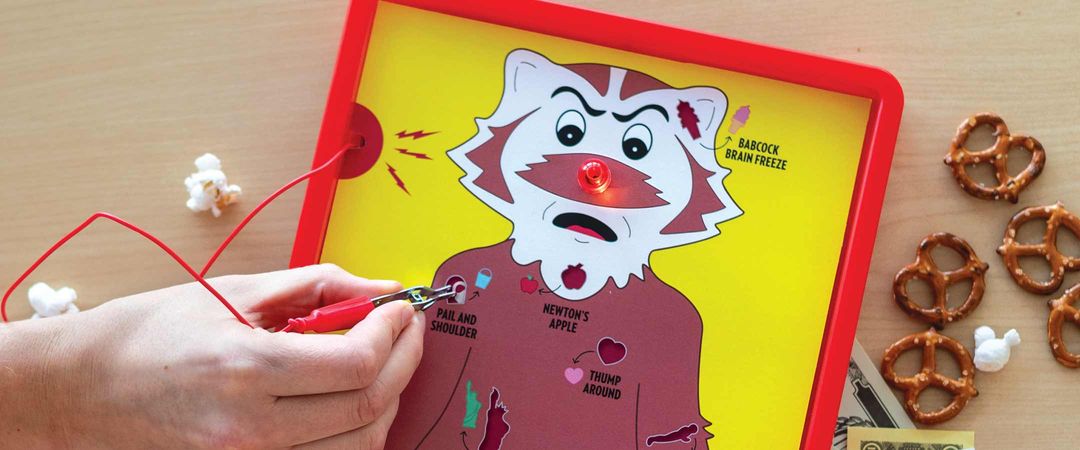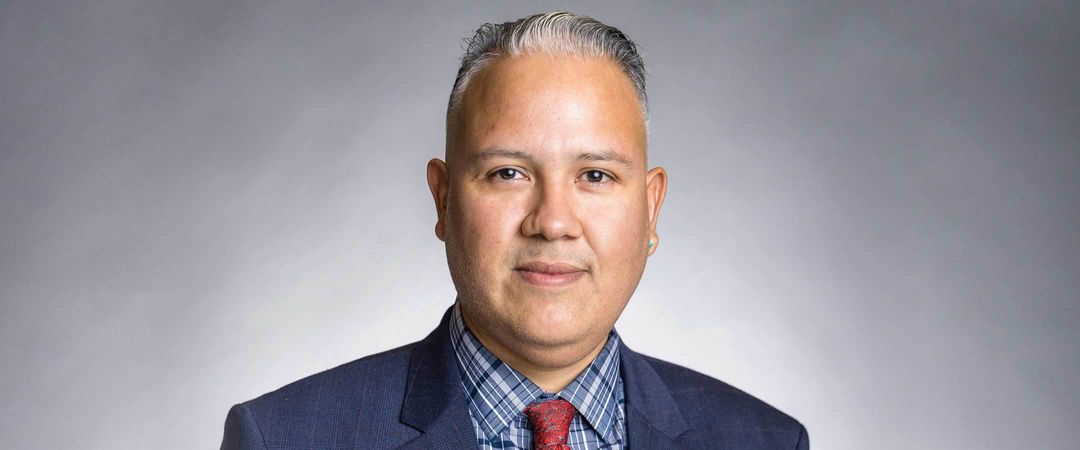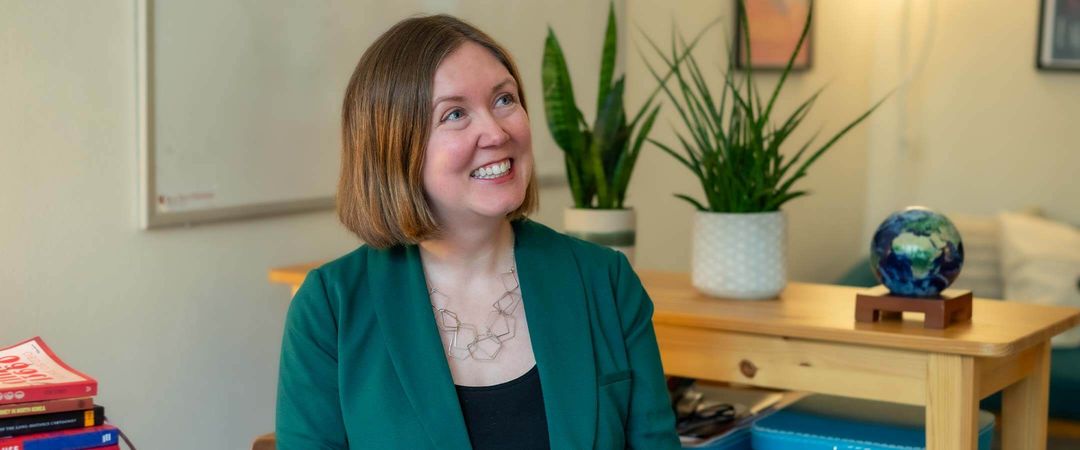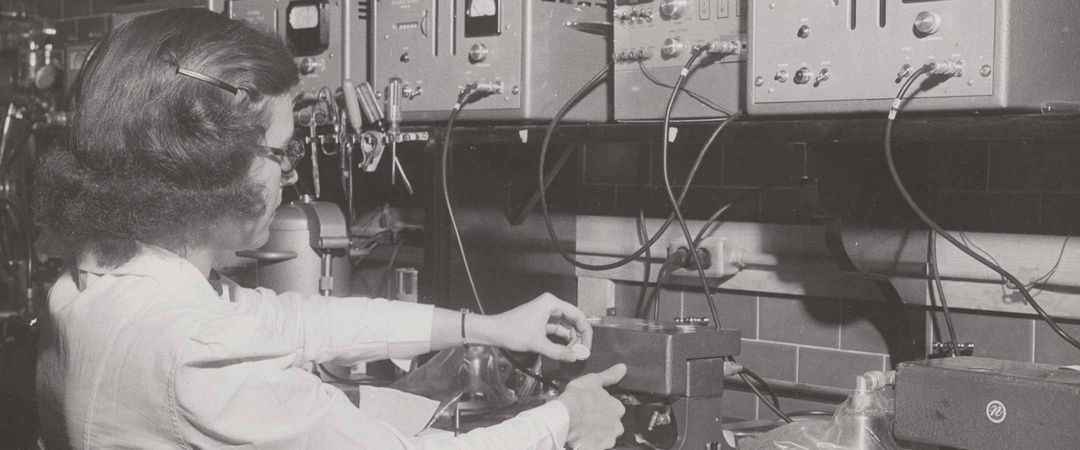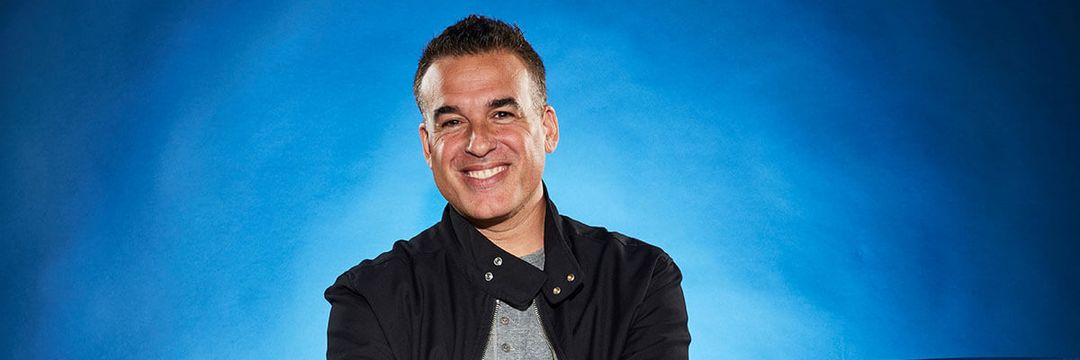How has the University of Wisconsin–Madison changed since you were a student? Put 100 alumni in a room, and you’ll get 100 different responses. The UW is in a constant state of change. Facilities are being upgraded. New research continues to push the boundaries of what’s possible. Technologies change. Fashions change. And thousands of new Badgers, who bring new experiences and new expectations, change the face of campus each year. Although each student — whether a four-year undergraduate, transfer, nontraditional, or graduate student — graduates with a different experience, there are some decades-old traditions and experiences common to all Badgers. Many are positive: the Wisconsin Idea continues as a guiding force for students, faculty, and staff. A sea of red continues to flow down Regent Street on football Saturdays. A passionate and ever-growing alumni network continues to provide support for the university and its students. But some similarities between the UW’s past and present haven’t aged well: the diversity of campus is growing, but many argue that it’s not fast enough. Inequities between students of different identities continue to divide.
So, how has the UW changed? We asked current students to re-create some of our favorite archival campus photos. These students — coming to Madison from as close as Milwaukee and as far away as China, ranging in age from freshmen to doctoral students — also shared their thoughts on what they think has changed at the UW, what’s stayed the same, and their hopes for the university’s future.
Violet Allscheid x’22
Hometown: Oak Park, Illinois
Major: Human Development
Pictured in: State Street
What are your thoughts when you look at the photo you re-created?
When I saw the photo of myself on top of the old picture, it made me feel nostalgic and proud. My mom went to UW–Madison in the late 80s, and I will never get sick of the stories she tells about her own experience at the UW and how the UW was so different from today. It just reminds me that whatever I am going through here, with any of the new experiences that college brings, there are thousands of other Badgers, past and present, who can relate to my own experience. I think that this community is really strong in that way and that is really special.
The photo you re-created was taken in the 1970s. What do you imagine the UW was like during that time?
From different, older Badgers stories and past articles I have read about the UW “back in the day,” I believe that there was more of a call to activism and student-community building than there is today. It seems today that there are different worlds on campus; from what I have heard and read, it seems as though Madison as a whole used to be more a community.
What do you think have been some of the biggest changes at the UW since the 1970s?
I think some of the biggest changes have been in campus culture and online learning. While COVID-19 has made this especially important, I find it interesting that not even 50 years ago, people could not submit online or watch online lectures, etc. I also believe this had added additional anxiety around school; I am not sure why, but today seems much more engulfed in actual classes over getting involved in a community on campus.
What are some things that you think have stayed the same?
I think that Badger pride and support is something that will always stay strong among all people who have attended Madison. The passion and excitement around Wisconsin from all Badgers is one that is not only widespread but also genuine from every Badger you meet (in my experience).
In 70 years from now, what do you hope will be the same about the UW?
I hope that the pride stays the same — singing varsity at a badger football game or just being surrounded by a group of badgers is a kind of energy that is a kind of energy you cannot find most places.
What do you hope will have changed?
I hope that issues with diversity and inclusion on campus will improve. It has been, and most recently brought into the spotlight, a widespread issue on campus that needs to be taken seriously in a way that not all students take it at this point.
Anything else you’d like to add?
I really loved this idea of combining student experiences, past and present, because UW–Madison has such a rich history that will only continue to grow.
Emiliana Almanza Lopez x’20
Community and Environmental Scholar
Hometown: West Saint Paul, Minnesota
Major: Environmental Sciences, Sociology
Pictured in: Carillon Tower
What are your thoughts when you look at the photo you re-created?
After looking at the image I immediately notice the subtle differences in the way the location looks today. I then think about all that has happened at this university while a simple location remained almost untouched. For example, all but one of the people in the photo are men, and the singular woman is centered giving me the feeling of tokenization. However, today there are more women who attend UW–Madison than men. Such dramatic changes have occurred over the past 70 years, yet simple things like hanging out with friends outside of social sciences next to the bell tower remain the same.
The photo you re-created was taken nearly 70 years ago, in 1950s. What do you imagine the UW was like then?
Seventy years ago I would not have been at the UW, I would likely not even be in college. My identity as a woman of color would have served as a large inhibition to attending an institution such as the UW. With this, I imagine the campus to be made up of white men, the student life to be centered on the white male experience, and the academics centered on and promote white male superiority. However, throughout the past 70 years great strides have been made to include students of color and women as ‘worthy’ and needed in a university such as the UW.
What do you think have been some of the biggest changes at the UW since the 1950s?
After the G.I. bill in the 50s higher education became suddenly available for middle class individuals, shifting the socioeconomic make-up of the university’s student population away from mostly just elite individuals. Moreover, the rise in women students also dramatically shifted the student body demographics. Considering both major shifts in population demographics I believe the social environment on and off campus has changed for the better, and in doing so the academic culture has also began to shift toward a more inclusive space.
What are some things that you think have stayed the same?
There are still great divides within the student population, specifically, the continuous marginalization of students of color, LBTQIA+ students, and students with differing ability statuses. While the university has begun to focus resources to uplift these groups of people, the overwhelming experience of many marginalized students on the UW’s campus is a difficult one. The additional work marginalized students have to do to prove that they belong here, and the emotional labor of checking people who continue harmful discriminatory behavior is a job in itself. Thus, while there have been great movement towards equality, the university must shift to build and financially support departments that integrate equity and social justice into their fundamental framework.
In 70 years from now, when you’re an alum, what do you hope will be the same about the UW?
In 70 years, I want the university to continue to strive to be cutting edge in research and critical thinking. I want the Wisconsin Idea to remain intact and be embodied by all departments across campus. I hope that the Multicultural Student Center will still be here and I envision it growing in space and capacity. I see what are now start-up spaces for the Latinx Cultural Center and APIDA Student Center becoming fully developed and that they along with the Black Cultural center become their own entities, fully funded and staffed and with the capacity to serve many more students then they currently do.
What do you hope will have changed?
First and foremost, I want students of color and other marginalized students to feel empowered and supported by the entire university, not only their specialized identity or service based departments. I want the university to be fully on renewable energy and to be innovating better ways to make clean renewable energy obtainable for all people, not only those who can afford to do so. I see coalition building across campus regardless of differences in identity and ideology, I see the student body being less stratified, but still respecting the need for intracommunity building.
Anything else you’d like to add?
If we do not use the privilege of having a platform to share our voice then we are being complacent — and complacency is always on the side of oppression.
Larissa Blazek x’23
Hometown: Oconomowoc, Wisconsin
Major: Biology
Pictured in: Gordon Dining and Event Center
I think that over the
years, the learning environment of Madison has changed drastically. In the
past, students seemed to learn in a more traditional manner and
more independently. Now, we have many more resources to choose from that
meet the needs of each student’s own learning style. We have the option to
learn independently on our computers and ask our professors and peers homework
questions online. For the more social learners, there are hundreds of student
organizations and tutoring services
to help students reach out for more information. I think it’s much easier now
to get involved in whatever you’re interested in because it’s a lot easier to
connect with other students or professionals who share your same interests.
I’m very grateful for the programs and resources we’re given at UW–Madison, as
it's made coming into my first year very easy. No matter what or who you’re looking for, there seem to
be 100 people you can talk to about it, so you never feel alone. I’m
curious to see how these things will develop in the future. I’m optimistic that
as society and technology advances, UW–Madison's campus will become even more
interconnected than it already is.
Paula Clemente x’22
POSSE Scholar
Hometown: Long Beach, California
Major: Nursing
Pictured in: Carillon Tower
What are your thoughts when you look at the photo you re-created?
When I look at the re-created photos, I see the amount of progress that has been made. It is now 2019, and it makes me wonder on what other wonderful changes will come.
The photo you re-created was taken nearly 70 years ago, in 1950s. What do you imagine the UW was like then?
I imagine the campus being less renovated. The Red Gym would have different features, and the newer buildings won't be here.
What do you think have been some of the biggest changes at the UW since the 1950s?
I think the biggest changes UW has been through is the emerging diversity onto campus. We still have a lot of work to do, but compared to the 50s, there has been some improvement.
What are some things that you think have stayed the same?
Honestly, I like how the UW is. I only see a more diverse and more representative campus in the future.
In 70 years from now, when you’re an alum, what do you hope will be the same about the UW?
I hope the UW keeps the school spirit during football games. I want to be able to see the crowd of red on the campus streets!
What do you hope will have changed?
I hope the UW will create a more inclusive space for all people, and further push the boundary on research!
Maria Fernandez x’21
Gwen P. Shapiro Rural Wisconsin Nursing Scholarship
Hometown: Mukwonago, Wisconsin
Major: Nursing, Spanish
Pictured in: Davis Hall Exterior
The photos you re-created were both taken 50+ years ago, in the 1950s and 60s. What do you imagine the UW was like during that time?
I imagine some aspects of life at the UW being so incredibly different 50 years ago than they are now, but I also imagine a few aspects being almost exactly the same. The way classes are formatted, for example, couldn’t be more different, especially with the recent advancements in technology. Life in the residence halls, however, seems extremely similar to how it’s always been; students still live in some of the same rooms that Badgers have lived in for decades.
What do you think have been some of the biggest changes at the UW since the 50s?
This is such a hard question because I believe that there’s a finite number of things at the UW that haven’t changed since the 50s. I think that one of the biggest physical changes has been in the development of our campus as a whole. I can’t imagine what walking down State Street and up to the Capitol might have looked like 60 years ago even with all of the pictures I’ve seen. I can’t even imagine what the technology labs 25 years ago would have looked like with large PCs! Time can easily be seen as scary or intimidating when you look at it this way, but it can also be seen as exciting; who knows what our campus will look and feel like in 2070? I can say one thing for certain: I’m excited.
What are some things that you think have stayed the same?
I think that one thing that has stayed the same over many, many years is the unbreakable bond held between current Badgers and Badgers of the past. The alumni network remains strong and continues to grow more and more every year. It warms my heart to see the support alumni give to not only current Badger students as they pursue their dreams, but also to people who are essential to what it means to be a Badger (demonstrating leadership, courage, and faith) such as [football] coach Paul Chryst.
In 50 years from now, what do you hope will be the same about the UW?
I hope to continue to see this comradery and encouragement between the alumni and the current students throughout my lifetime, but I also hope that we are all held to the high standard that UW students are held to today. We are lucky enough to have the privilege of attending an incredible university and I hope that students continue to experience that same privilege for years to come.
What do you hope will have changed?
As a Latina student, I really hope to see some changes in the amount of diversity seen on campus. It hurts me to see firsthand how isolated people of color feel on the UW campus these days, and I genuinely do hope to see these issues addressed during my time here so our campus can be welcoming and open to students from all backgrounds.
Anything else you’d like to add?
I would just like to express my gratitude for being invited to take part in this project! I think that what the Badger Insider is trying to convey through it is extremely fascinating and valuable to the UW family. I was lucky to be involved.
Joya Headley x’23
Hometown: Milwaukee, Wisconsin
Major: Public Health, Anthropology
Picture in: Elizabeth Waters Parlor
What are your thoughts when you look at the photo
you re-created?
Personally, I still feel uneasy,
given that tokenism is so prevalent on this campus. When I tell my story, I
want this to be told authentically. I am still afraid about how my voice and my
story is going to be conveyed and misrepresentation fears me because me and my
people are impacted by it.
The photo you re-created was taken in the 1970s.
What do you imagine the UW was like during that time?
I imagine that the UW was the
same as it is now, a predominantly white institution. However, it is definitely
different than today in the sense that the 13 demands passed by black students
in the 70s advocated for more resources for us, something that we have today.
What do you think have been some of the biggest
changes at the UW since the 1970s?
Students of color have advocated
for ourselves, and the result of this has shown and has impacted everyone.
What are some things that you think have stayed
the same?
One thing that stayed the same is
a lack of diversity and a lack of support for students of color. The university
has used black student activism and has shifted it so that it doesn’t provide
to us. It has been switched so that it benefits the university and not us. For
example, black students in the 70s had advocated for more enrollment of black
students. However, their efforts have been used to enroll less black students,
and more students who fit the model minority category.
In 50 years from now, what do you hope will be the
same about the UW?
The only thing that I believe
should stay the same is scholarship opportunities for students of color.
However, everything else must be changed.
What do you hope will have changed?
I hope that the university provides
for students of color like it should. The campus uses us for tokenism and in
advertisements, but they don’t truly care about our well-being and how we can
thrive on campus. I hope that the university looks at us as human and treats us
like how we are supposed to be treated.
Mannat Mehta ’20
Hometown: Gurgaon, India
Majors: Economics, Political Science
Pictured in: Elizabeth Waters Parlor
What are your thoughts when you look at the photos you re-created?
I love the nostalgia they invoke and how equally familiar and unfamiliar they are. Re-creating those images, you could feel the similarities so vividly, from the conversations that have happened on those couches to the MUSIC printed on the doors of the Humanities building. But it was the differences that really stood out to me; as an international student, I can’t really relate to the students in those images as much as I can to the places.
The photos you re-created were both taken in the 1970s. What do you imagine the UW was like during those times?
I imagine that given the student population was so much smaller than it is now, the experience of studying on campus was a lot more intimate compared to now. The campus was smaller and the interactions between people were probably more frequent, but I envision the culture to be exactly the same; students basking in the sun with a book on Bascom, enjoying a beer by the lake, and studying in the dorms together.
What do you think have been some of the biggest changes at the UW since the 70s?
Technological advancement is a change that immediately comes to mind. For the image in Liz Waters, all of the students are clutching a book of some sort; while when re-creating the image, we all instinctively reached for a laptop or cellphone. Beyond that, the growth and diversification of the student population is one of the biggest changes I’d imagine, in terms of more inclusivity regarding race, socio economic backgrounds, gender, sexual orientation, etc.
What are some things that you think have stayed the same?
As I stated before, probably the culture that UW–Madison has. While the student population and facilities may have changed, what it means to be a part of this university and all that Madison has to offer I feel like has remained authentic.
In 70 years from now, what do you hope will be the same about the UW?
I hope that students would be able to revisit the same facilities that we’re able to revisit now, that this feeling of belonging to a historic university never changes no matter how much the campus evolves.
What do you hope will have changed?
I hope that the university adapts in terms of policy and inclusion as quickly as it is expanding toward it. While there has definitely been improvement over time in terms of a more present student voice on campus even just in the four years I’ve been here, it definitely has to happen at a faster rate.
Anything else you’d like to add?
I am so grateful for the opportunity to re-create these images on a campus that means so much to me while representing our ever-changing student body!
Taylor Orleans x’20
Hometown: Cascade, Wisconsin
Major: Kinesiology
Pictured in: Babcock Hall Exterior
What are your thoughts when you look at the photo you re-created?
The original photo is very nostalgic, it is a reminder that the tradition of getting Babcock ice cream with your friends has been around for a long time. The photo I re-created shows a difference in the audience that is attracted to the Babcock Dairy Store. The individuals in the original photo look older than the students that I have seen there in my time at UW–Madison. Additionally, university jobs are primarily held by students.
The photo you re-created was taken nearly 40 years ago, in 1981. What do you imagine the UW was like during that time?
I imagine that the physical campus as well as the student body was much smaller. I think student life was very similar to what it is now, for example, hanging out at the terrace or on Bascom Hill. Additionally, the university continues to have an influential impact in the world of research and politics.
In 40 years from now, what do you hope will be the same about the UW?
I hope the traditions associated with football games and the terrace as well as general student life stay the same.
What do you hope will have changed?
I hope the university continues to grow and that the student population can increase so that more people can experience the best four years of their undergraduate career.
Gracie Regala x’22
Wisconsin Alumni Student Board
Hometown: Saint Paul, Minnesota
Major: Social Work
Pictured in: State Street
What are your thoughts when you look at the photo you re-created?
The first photo I re-created was of the two students studying with the background of State Street. When I look at this photo, I am struck by how different State Street looks, but how the general vibe doesn't seem to have changed all that much. The busy aura of State remains the same. You even see a biker riding past on Lake Street, something many students, including myself, have done many times still in this present day. Lastly, the two students comparing notes is a scene that could definitely be found on campus today.
The second photo I re-created was of the ice cream parlor. What strikes me as interesting about this scene is the general aesthetic. While Babcock remains trying to maintain this classic ice cream parlor aesthetic, there is nothing quite like the original. I also find it interesting that I can only see two workers, both of which are female, something that has definitely changed since then.
The photos you re-created were taken in the 1970s and 1980s. What do you imagine the UW was like then?
I imagine UW in the 70s and 80s to be a place full of life and ideas by Badgers, fueled by love for the school, and a great place to both learn and play. I imagine that the same study spaces that are filled up daily now were filled back then during the week, while the same joy and celebration was happening during the weekend.
What do you think have been some of the biggest changes at the UW since the 1970s?
One of the biggest changes, I think, is the diversity on campus; however, with this change in the makeup of campus population, I don't think the generalized narrative of what it means to be a Badger has changed. Another big change is the implementation of technology. In the 1970s, you certainly weren't seeing students walking around with AirPods in, studying using laptops, or sitting in lecture halls answering questions on their smart phones.
What are some things that you think have stayed the same?
I think one thing that has stayed the same is the culture. I mean this in a positive and negative way because I believe the UW has historically had a culture surrounding intense desire to learn, joy and excitement for the school, and the empowerment of student voices, but I do think the campus has a historic dominate narrative. I think this narrative was greatly focused on the privileged voices on campus and continues to be today. The narrative washes away the stories of underrepresented identities, especially identities of color, and is in my opinion, the biggest issue on our campus.
In 50 years from now, what do you hope will be the same about the UW?
I hope that the students of the UW in 50 years continue to have a thirst for knowledge, an ability to balance work and fun, and the desire to make positive change in the world. I also hope that the institution continues to foster these big thinkers.
What do you hope will have changed?
In 50 years, I hope the privileged identity dominated narrative is washed away. I hope that the UW is a place where all voices feel elevated, all identities feel seen, and everyone feels like they have a place on campus. There is a lot of work for the institution to do in order to make this place home for all identities, especially people of color, but I believe we can do it and that in 50 years UW will feel like home for all its students.
Terjuan Short x’23
Hometown: Madison
Major: Undeclared
Pictured in: Babcock Hall Exterior
What are your thoughts when you look at the photo you re-created?
I think of the misconception of life that comes with photos. I say this because the original picture shows the true diversity of the campus during that time, while the re-creation shows more diversity than what exists.
The photo you re-created was taken nearly 40 years ago, in 1981. What do you imagine the UW was like during that time? (This can be about student life, physical campus, etc.)
I can imagine that the University was similar to how it was now, except for a few more people of color. The students during that time had minimal interactions with people of color, so I could imagine that they were near close-minded and culturally incompetent.
What do you think have been some of the most significant changes at the UW since the 80s?
I believe that one of the most significant changes to UW since the 80's was the amount of support given to the students of color has increased. With the enforcement of affirmative action and equal education laws, the university is forced to play a part in higher education for people of color.
What are some things that you think have stayed the same?
I believe the lack of acknowledgment and awareness for people of color has remained the same. There are not many clubs, classrooms, or greek life that consists of a diverse group of kids. Sports have always been the only means of apparent diversity.
In 40 years from now, what do you hope will be the same about the UW?
In 40 Years, I hope UW continues to fight as a University to make this campus friendly and open for anyone, no matter their race, religion, or sex, to feel like they belong here.
What do you hope will have changed?
I hope the ignorance of the students will improve. In other words, I hope all students gain more cultural knowledge about most of their peers. I believe that if someone has to work with a diverse group of people in a diverse country, they should have the education and skills to do so.
Anything else you’d like to add?
This re-creation shows what the campus should look like all the time, not how it appears. The perfect picture doesn't always tell the ideal truth.
Maika Thao x’23
Chancellor’s Scholar
Hometown: Milwaukee, Wisconsin
Major:Genetics and Genomics
Pictured in: Babcock Hall Exterior
What are your thoughts when you look at the photo you re-created?
To be honest, diversity and gender roles. I think about the students I shot with and how it is so much more diverse than this time period (predominantly white), and how it went from two women serving ice cream in the kitchen-like area to this time around, boys — maybe this was just a coincidence, maybe not?
The photo you re-created was taken nearly 40 years ago, in 1981. What do you imagine the UW was like during that time?
I imagine the majority of students on campus in the 1980s to be wearing bright neon colors, baggy mom/dad jeans, and have their hair in some form that resembles a mullet and or is dramatically poofy. The university still held similar values and academic prestige, but the campus likely had less technology, fewer clubs/organizations, and a smaller count of students of minorities.
What do you think have been some of the biggest changes at the UW since the 80s?
I honestly don’t know because I didn’t live in the 80s, but I feel like since then, the university has continuously made step-by-step efforts to show respect, understanding, and gratitude for the native land they are on, as well as trying to recognize the contributions that students of all colors and types have on this campus. Nothing is perfect, especially with the recent Homecoming video [fall 2019], but I believe that the population of students here trust that the UW is always trying to learn how to make this campus better like it has done before; for one, helping students feel more welcomed and included
What are some things that you think have stayed the same?
Definitely the Wisconsin Idea; it is so important to ensure all students understand that the education we obtain here should be used to help society and our communities become better. In short, we should aim to be a part of things bigger than ourselves.
In 40 years from now, what do you hope will be the same about the UW?
Oh god, I don’t want to think about being 58 years old right now haha, but I hope that the UW still strives to make this campus more inclusive, aware, and still preaches the Wisconsin Idea. More importantly, the ice cream recipe should stay the same!! That much will at least make 58-year-old me happy.
What do you hope will have changed?
I don’t know what I would want to change, because sometimes what we need to change is not the whole, but instead, ourselves as individuals, particularly in ways we find will help us become more understanding and conscious contributors to society. This campus is only as great as its staff and students are, so hopefully we can maintain our prestige and continuously learn [and] be inspired about what we can accomplish and why we are here.
Padao Yang ’09, DNPx’22
Signe Skott Cooper Scholarship, Lora L. Marshall School of Nursing Scholarship
Hometown: La Crosse, Wisconsin
Major: Nursing
Pictured in: Ingraham Hall Mosaic, Gordon Dining and Event Center
What are your thoughts when you look at the photos you re-created?
I think it’s amazing to see many buildings still preserved much to what it originally was like. For those buildings that are no longer around, it shows growth and investment in the next generation. Both are very much appreciated.
The photos you re-created were taken in the 1950s (Ingraham, Nursing), 70s (Liz Waters), and 80s (Gordon). What do you imagine the UW was like during those times? (This can be about student life, physical campus, etc.)
I imagine there being less mobile technology around back then, the campus being smaller, less crowded, and maybe quieter.
What do you think have been some of the biggest changes at the UW since the 1950s?
The diversity in the student population has likely changed, and the access to technology and information have increased.
What are some things that you think have stayed the same?
Many buildings have stayed the same.
In 70 years from now, what do you hope will be the same about the UW?
I hope that UW continues to be leaders in innovation with education, technology, and health care.
What do you hope will have changed?
Have less traffic jams around campus and continue to have more diversity and inclusion in the student body as well as the faculty and staff.
Anything else you’d like to add?
I really love UW-Madison! It’s a beautiful place to live, learn, and enjoy life.
Ingrid Zhou x’20
Hometown: Guangzhou, China
Major: Food Science
Pictured in: Davis Hall Exterior
I was at the Davis Hall for my photoshoot. I remember walking past the Davis Hall in the past, but never know for sure what is this building for. As a student, I run around in different campus buildings for all my classes. Running through my daily route, I felt like I was familiar with all the buildings on the campus. But actually, there are many buildings such as Davis Hall that have a long history. I never knew what these buildings are for, and I cannot imagine how different these buildings were in the past.
Badger Insider extends a special thank-you to the campus partners and volunteers who made this project possible: Jared Biddle x’22 (Wisconsin Black Student Union); Shauna Breneman (Wisconsin Union); Kevin Check ’96, MPA’03 (School of Nursing); Greer Davis (Admissions and Recruitment); Arturo “Tito” Diaz ’15 (Multicultural Student Center); Brendon Dybdahl ’98, MBA’04 (University Housing); Shannon Ghere ’10 (UW Foundation); Trent Jackson ’94, ExecMBA’08 (UW Foundation); Cat Phan ’00, MA’09 (University Archives); and Samantha Samreth (Mercile Lee Scholars Program).
